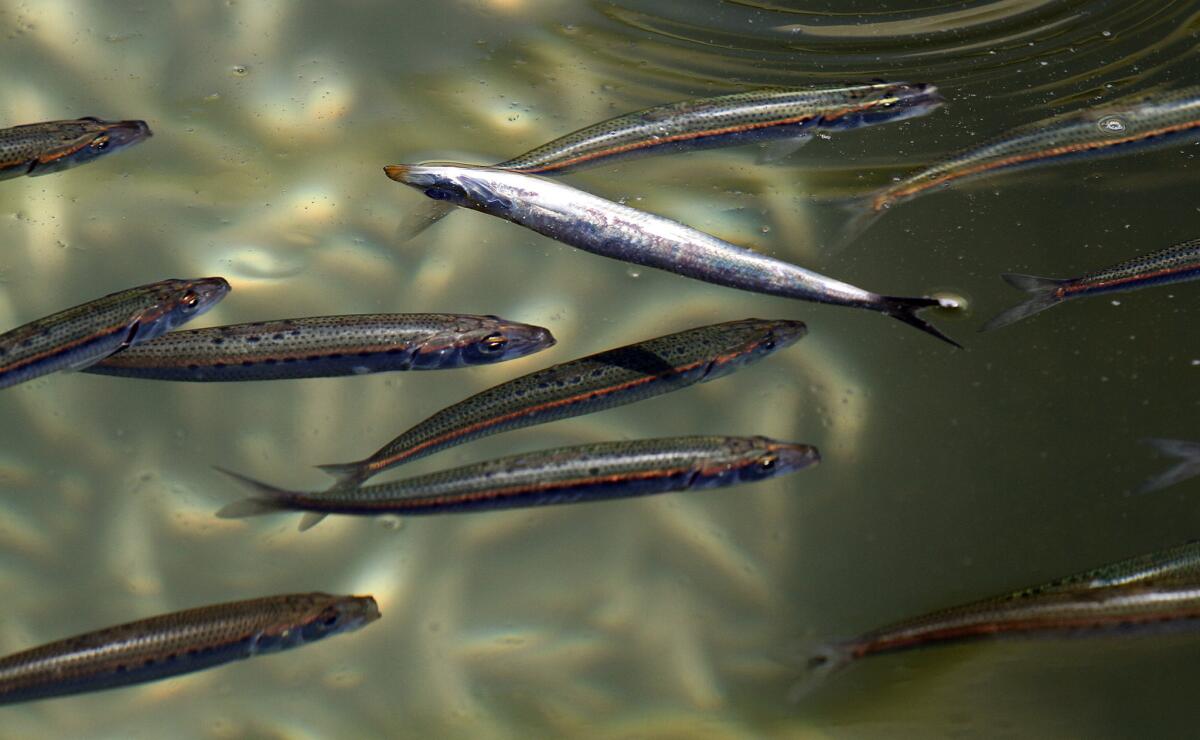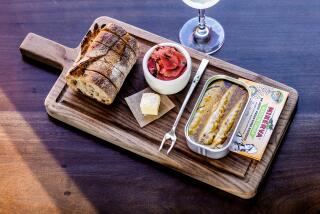How to buy and use anchovies in cooking

A lot of what it takes to come around to the anchovy side of life has to do with knowing which anchovies to buy and how to use them. Below is a basic tutorial on what anchovies I use and how.
The most readily available anchovies are anchovies packed in oil. Typical supermarket varieties are brined for two months before being rinsed, filleted, gutted and packed. The result of the brining is a less intense anchovy experience. My biggest problem with these anchovies is that you have no idea what kind of oil they’re packed in, and it usually isn’t very good. Still, I know they have their place. Think of them as anchovies for beginners. Using these, you get an anchovy flavor, but they aren’t going to give you an anchovy revelation.
Unless you’re getting a real specialty product (see the Alici di Cetara item), salt-packed anchovies are generally a higher quality anchovy than those packed in oil. Salt-packed anchovies are gutted and dried before being packed in salt, which draws out any excess water and concentrates the flavor of the fish. The salt-packed anchovies we use, the Augustino brand, come from Sicily, the source of many salt-packed anchovies. Salt-packed anchovies begin to break down once the can has been opened, so either plan on giving anchovies to all of your friends or buy them from an already opened can at the deli counter of specialty food stores or Italian markets. Salt-packed anchovies are sold whole, so you have to fillet them and discard the spines. Remember when using them in recipes that each anchovy is two anchovy fillets. Rinse salt-packed anchovies thoroughly under cold water before using them to get rid of the excess salt. These are the anchovies I use as a flavoring, whether in a braise, a salad dressing or to make bagna cauda.
Marinated white anchovies are typical of Spain, where they are called bocquerones. These anchovies are different altogether from the anchovies canned and in jars. They are marinated in vinegar and other seasonings and used as a condiment or a component of a dish. You’ll generally see them in the fish department of specialty food stores or in the refrigerator case at seafood shops. I drape these anchovies in a kale salad I serve at the Osteria, and, in a homage to that American tradition, I put them on a pizza with tomato sauce at the Pizzeria.
Alici di Menaica are a special type of salt-packed anchovies that are on the Slow Food organization’s Ark of Taste, which is like an endangered species list for foods. Menaica refers to a type of net that has been used for fishing anchovies since Roman times. Few fishermen use this method, which is slower than modern nets but is better for the preservation of anchovy populations and also supposedly improves their flavor. I use these anchovies when the anchovy is the highlight, not an ingredient in a dish, such as when I pair the anchovies with bufala mozzarella and herb vinaigrette. The only source I know for them in the U.S. is Buon Italia, in New York’s Chelsea Market. These delicate anchovies begin to break down even before you open the can, so buy them during the season — late fall and early winter — and then use them in every way you can think of before they go bad.
I discovered Alici di Cetara last summer, when I saw the name listed on restaurant menus as I traveled south from Rome to Campania. These very special anchovies are caught in a seaside village called Cetara from April to September and placed by hand in large plastic drums, layered in salt, where they remain for 12 months. After that the anchovies are cleaned, dried and packed again, this time for retail. If they will be packed in oil, the fish are carefully filleted by hand and laid out to dry on linen cloths, which supposedly absorb the briny flavor. The fish are then packed standing up in either sunflower oil, olive oil or a combination. With these anchovies, you get all the deliciousness of the fish with none of the hard-to-take, overly fishy qualities often associated with anchovies. They were the inspiration for a wax bean salad I serve with a crostini on the side, topped with a hard-cooked egg and an anchovy fillet. They are available from the Gustiamo website.
Colatura is an extract made of Cetara anchovies during the curing process, which is then aged for three to four years. The result is a liquid with a much less fishy flavor than anchovies themselves. It can be used to flavor vegetables, pasta, and meat and fish dishes. Expect to see it more and more on restaurant menus, as it is definitely one of the ingredients of the moment. This is also available from Gustiamo.
Until I discovered anchovy paste made of Cetara anchovies, I never saw a reason to use it. It’s just so easy to take an anchovy and smash it with the back of your knife, and when you chop it up it turns into a paste with almost no effort. Cetara anchovy paste is a different story: all the goodness of those anchovies concentrated into a convenient paste that can be used anywhere that anchovies are used as a background ingredient. I never thought I’d come to love anchovy paste.
Never say never. A good lesson when it comes to anchovies in general.
More to Read
Eat your way across L.A.
Get our weekly Tasting Notes newsletter for reviews, news and more.
You may occasionally receive promotional content from the Los Angeles Times.






